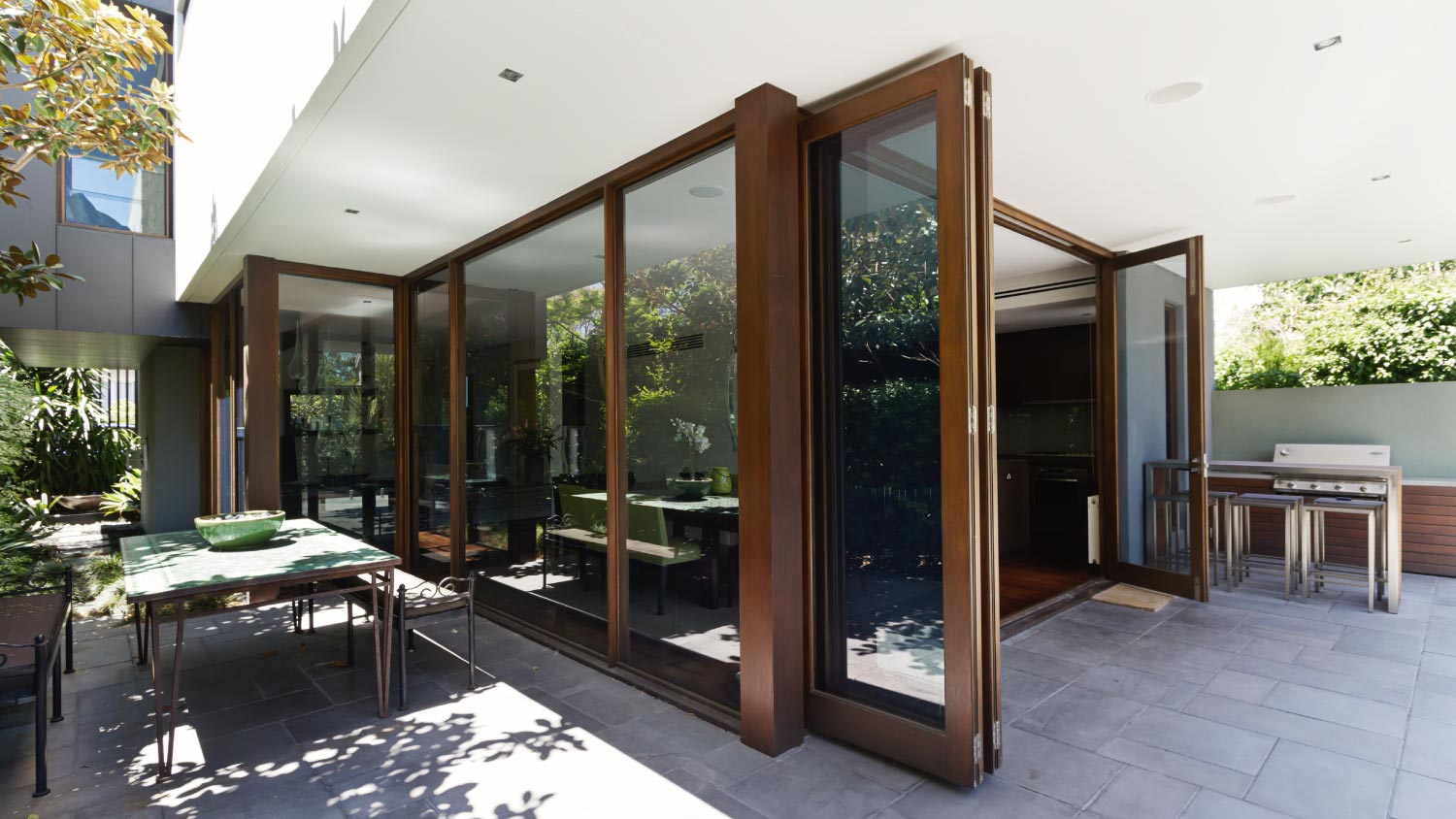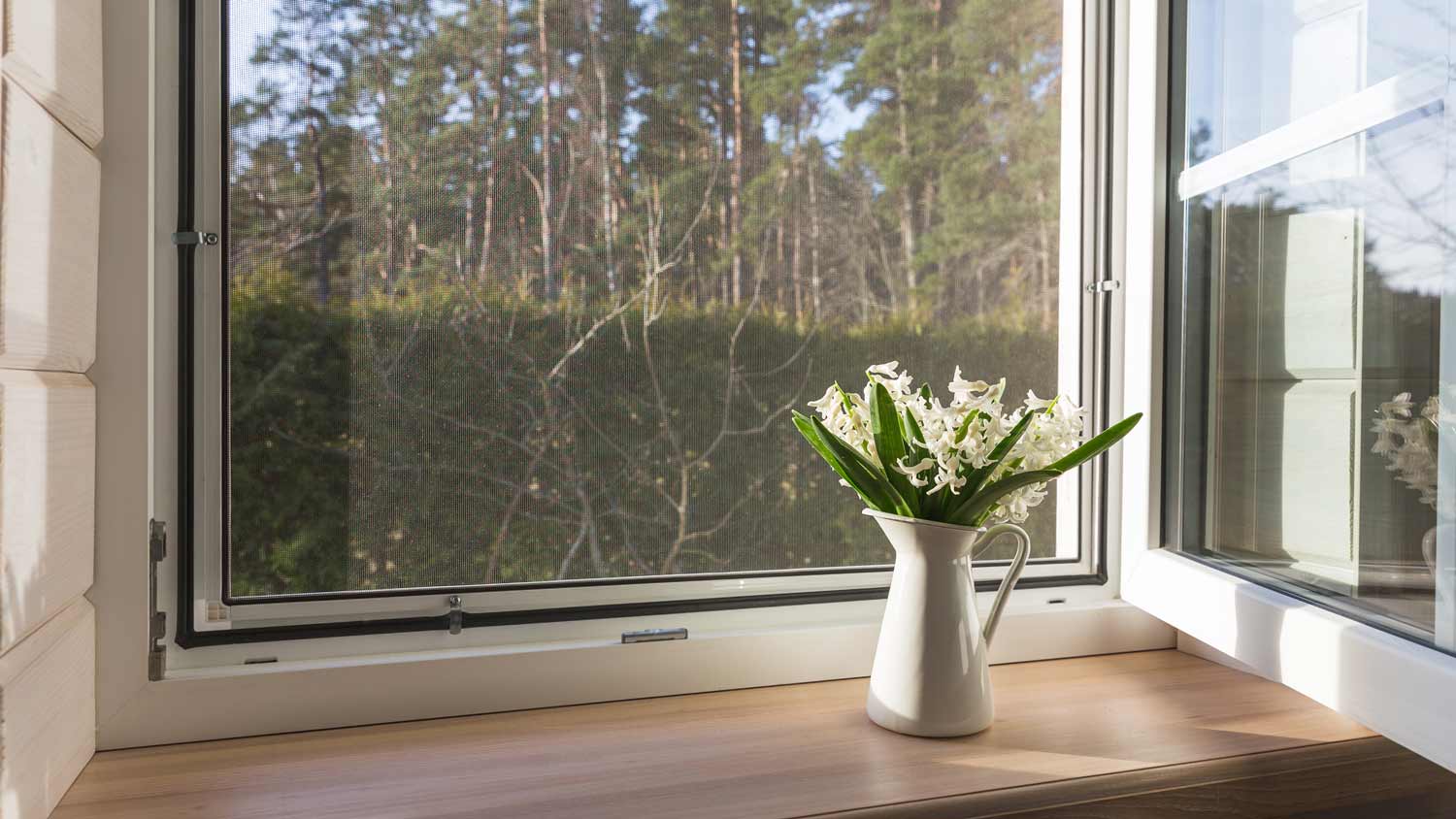Open Up Your Room Bifold and Accordion-Style Doors
For when traditional doors don’t go accordion to your plan


Bifold doors are made from a number of different materials.
Accordion-style doors are a type of bifold door.
They’re great for design, but can be tricky to clean and maintain.
They’re affordable, durable, and come in an array of sizes.
Though they may not get as much attention as sliding or French doors, bifold doors are just as worthy of your attention. Chic and capable of maximizing both the light and square footage in a space, bifold doors can be an ideal addition to almost any household. Use this guide to understand the mechanisms behind this type of interior door, plus if it’s the right choice for you.
What Are Bifold Doors and How Do They Work?
Unlike traditional doors that swing open and closed, bifold doors are constructed from two or more door panels that fold inward as they are slid open, not unlike an accordion. Panel sizes range from 60 to 145 inches in height and anywhere from 16 to 780 inches in width, so they can be used in all types of situations.
How Are Bifold Doors Different from Accordion Style Doors?
Accordion-style doors are a smaller subcategory under the bifold door umbrella. Both are constructed the same way, but the way they’re designed and the materials they’re made of vary.
In general, accordion-style doors feature smaller folds that are best suited for single doorways or small spots where a door or curtain could be installed (like underneath a staircase or in front of a laundry alcove, for example).
On the other hand, bifold doors typically feature much larger folds and are often designed to fill something like a large patio entry rather than a small interior doorway. Unlike accordion-style doors, they are frequently made from more than one material, like glass panes and metal frames.
The Different Types of Bifold Doors by Installations

There are two main ways of installing bifold doors and each option has its upsides and downsides. Find out what’s best for your needs below.
Bottom Rolling
Bottom-rolling bifold doors receive more support from mechanisms in the bottom part of the door frame. This type of bifold door is perfect for large, heavy panels that may be a burden on your home if hung.
Top Hung Bifold
Much like their name indicates, top-hung bifold doors are hung from rollers in the top part of the door frame. They’re usually lighter than their bottom rolling counterparts and less likely to accrue debris. Plus: they also better conceal the bulky mechanisms that make them function.
The Pros and Cons of Bifold Doors
Bifold doors are capable of everything from making a space larger to more divided and organized. But they aren’t without their downsides either. Keep reading to find out a bit about the pros and cons of this interior door option.
Pro: They Can Bring a Ton of Light Into a Space
Blurring the lines between inside and outside is a lot easier with the help of a bifold door. Because they can be made with large glass panes and fit to almost any dimension, they’re ideal for everything from wide, open doorways to great big patios, to narrow portals into secret gardens. Install a bifold door made from glass, and your room will have so much more natural light.
Con: …But They Might Get Dirty Fast
Bifold doors are more likely to track dirt with frequent use because they don’t open and close in a traditional way. As the panels move inward, they may push more dust and debris into your window tracks than you’re used to dealing with. This is especially true of bottom rolling bifold doors, which rely on additional mechanisms on bottom for enough support.
Pro: They’re Great for Dividing a Room
Accordion-style doors are especially great for creating divisions in different parts of your home. You could add one to an empty doorway and open it a little or a lot depending on how open or closed you want the space to feel. Or add one to a kitchen entryway so you can easily slide it shut to keep smells out of the rest of your house while cooking.
Con: …And Tricky to Maintain
Cleaning the tracks on bifold doors requires you to remove the panels, which can be quite a hassle compared to the relative ease of cleaning traditional doors. If your closet door constantly falls off its track, use this guide to fix it on your own.
Pro: They’re an Affordable Interior Door Option
Bifold doors cost an average of $150 to $500 to purchase and hang. That’s considerably less than the cost to install other interior doors, which start at $500 in general.
The Most Common Types of Materials for Bifold Doors
Bifold doors can be made of one or two materials. It’s not uncommon to find one that’s entirely made of vinyl and another that’s a combination of glass and steel. Here are the most common types of materials that bifold doors are made of.
Molded Composite: made of a mix of different synthetic materials to create a wood-like appearance that’s more durable and less expensive than actual wood at $60 to $90 per door on average. Bifold doors can be made entirely of molded composite, or the material can be used as a frame for another material, like glass panes.
Glass: glass-paned bifold doors are usually fitted with either wood, molded composite or steel frames. They create the effect of floor to ceiling windows.
Wood: common in bifold doors, but more expensive than molded composite at $120 to $140 per door on average.
Vinyl: the most common material used to make smaller-paneled, accordion-style doors. It’s a durable, inexpensive way to add a little something special to a neglected doorway.














